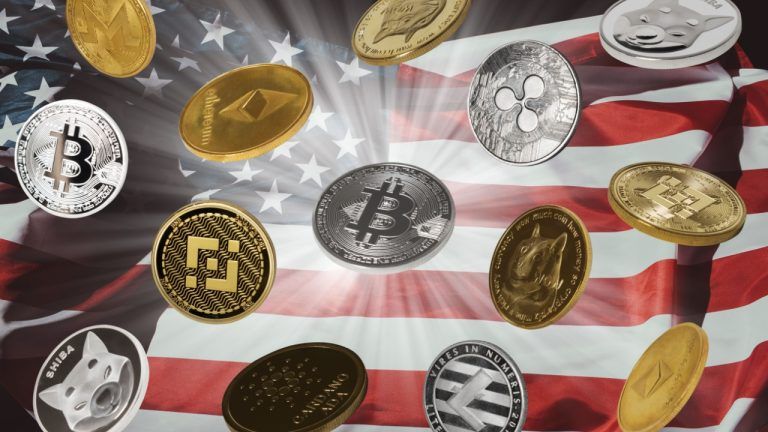wNews: 8 Hours of Sleep and 100X Returns, Welcome to Crypto
This week’s wNews compares work culture at one of the world’s largest investment banks and the 24/7 crypto markets. In short, neither wins. It does, however, look like one industry has a few more passionate individuals than the other.
FWIW I agree with @Arthur_0x’s OG tweet. I think college grads can make more and work far less in crypto, just comes w some risk
But it’s baseless to say the days are “long gone” for junior analysts. Anyone near the industry knows it’s never been more lucrative actually
— MakeMoneyInvestor (@PermEquity) March 19, 2021
As for markets, more of the same. The Federal Reserve Chairman Jereme Powell spoke mid-week, ushering in more bulls. Bitcoin reached across $60,000 for the second time in its history. Ethereum didn’t find Powell’s speech quite as inspiring. Still, on-chain data suggests ETH will play catch up soon enough.
Finally, this week’s to-do list walks readers through how to get started on Binance Smart Chain (BSC). Several notable Ethereum-exclusive projects have made waves since joining. Other BSC-native projects have also made headlines. But for much different reasons.
Now, readers can learn more about the commotion
All that and more, below.
The 168-Hour Work Week
A scathing document from within the Goldman Sachs citadel has grabbed the business world’s attention. In it, thirteen first-year analysts at the investment bank cite some pretty extreme working conditions.
The small sample size suggests the document is a publicity stunt more than anything. Still, the brief glimpse into traditional finance has made it clear for many that crypto offers a much better upside.
The survey describes the effects the workload has had on the respondents’ mental and physical health via multi-colored charts. It’s mostly large green blocks turning to shorter red blocks over time, which is usually bad in finance.
The unrelenting work hours aren’t all, though.
When asked, “Have you frequently experienced: Shunned / Ignored in Meetings,” 92% answered yes. More than 80% indicated that they faced excessive micromanaging too. Responses about what these 13 employees think about the firm are also abysmal.
The “Select Analyst Quotes” section adds more color to the stats. One respondent said:
“There was a point where I was not eating, showering or doing anything else other than working from morning until after midnight.”
Another said that growing up in the foster care system was worse than working at Goldman Sachs.
The leaked presentation has since made the rounds not just in traditional finance but also in the cryptosphere. Members of the crypto community have been mixed in their responses.
Indeed, not everyone sees such a work culture as purely negative.
80 hour work weeks are rookie numbers; if you’re not putting in ~126 hours a week right now, you fail to understand the moment you’re in [nor the opportunity].
— GCR (@GiganticRebirth) March 19, 2021
“Pls Fix, Thanks”
The grueling hours, last-minute changes, and hazing rituals common on Wall Street have been well understood even for those who’ve never stepped foot in Lower Manhattan. The world can thank Hollywood for that.
It’s also well understood that first-year analysts can earn a serious wedge in exchange for the abuse. Base salaries range from $85,000 to $95,000, but with bonuses tacked on, some analysts can hit and cross the $200,000 figure. And that’s just one year fresh out of college.
The New York Times reported that this salary immediately places them in the top “0.1 percent for their age and experience” in terms of earnings.
And despite the rather reasonable tradeoff, Goldman has issued a note saying they’ll look into their workplace culture. A spokeswoman for the bank shared that Goldman is “listening to [analysts’] concerns and taking multiple steps to address them.”
The presentation’s findings gave renewed life to anecdotal evidence about the massive inflows of fresh finance talent in crypto.
It boils down to two things: More sleep and more money. A lot more money.
Oh yeah I also know at least a dozen people in crypto that make way more than David Solomon last year🤷🏻♂️https://t.co/lscb5Ixjnk
— Arthur (@Arthur_0x) March 19, 2021
Market Action: Bitcoin (BTC)
Bitcoin’s reaction to global macro events and its strong correlation with the stock market is a positive sign for the cryptocurrency’s institutional adoption narrative.
Powell’s speech on Wednesday led to bullish price action in the stock markets, which echoed in gold and Bitcoin. It marks the revival of the “dollar down, everything else up” trend with another round of stimulus from the U.S. government.
The macroeconomic outlook has improved with the reduced cases of COVID-19 and jobless claims.
Currently, the stock market is experiencing a rotation from tech-based equities to epicenter stocks. Epicenter stocks are classified as the travel, banks, retail, and other business areas worst-hit during the pandemic.
Bitcoin faces a crucial test as a non-correlated, inflationary hedge as tech stocks take a beating.
The derivatives market cooled down this week, with funding rates heading to the neutral zone. A dip in funding rates provides an opportunity for buyers to push the price higher.
On-chain, Bitcoin’s market value to network value ratio (NVT) is spelling trouble. The ratio continued to climb up to new highs suggesting that Bitcoin’s price is overvalued compared to the transaction volume.
Nevertheless, since last year, a lot of Bitcoin’s transactions have moved off-chain. For instance, $10.6 billion BTC is tokenized on Ethereum; further, a lot of BTC has moved to institutional custody since last year via allocations from hedge funds and companies.
Bitcoin balance on exchanges also continues to dip, which signals a buying pressure in the market. According to on-chain analyst Willy Woo, long-term Bitcoin holders added to their position during the recent dip, while weaker hands sold.
A tale of 3 charts…
From March 2020, #Bitcoin undergoes steep and continued supply shock in sync to USD money printing.
1) Speculative inventory on exchanges deplete. pic.twitter.com/4IkK9t2Weu
— Willy Woo (@woonomic) March 19, 2021
Bitcoin’s price trend continues to be bullish, with higher highs and lows. The support to BTC is currently around $52,000 and $42,500, with resistance at a previous peak of $61,800.
On the Bitcoin markets, SIMETRI’s lead Bitcoin analyst, Nathan Batchelor, told Crypto Briefing:
“BTC is looking for directional clues around the February 2021 trading high going into the weekend. Next week’s option expiration event is also starting to come into focus so we could see some pretty choppy trading conditions until then. The $65,500 level is the next big upside target if bulls take out the current ATH.”
Market Action: Ethereum (ETH)
Ethereum has held above its upward trending line since the beginning of the year; currently, the line’s support is at $1,600.
The previous local low of $1,360 marks the invalidation level from the current bull trend.
Coincidentally, it also marks the floor price of investment by high-volume ETH investors.
According to Philip Gradwell, the director of Research at Chainalysis, investors who hold more than 5,000 ETH have paid an average price of $1,338 during the recent bull run. This figure is up 188% from the previous threshold of $464.
The balance of Ethereum on exchanges dipped to a new two-year low, indicating that buyers are accumulating. Moreover, the network’s usage continues to peak with the institutional adoption of DeFi applications.
The network users have shown resilience to the rising gas fees and are working towards ruling out the bottleneck by burning ETH, layer-2 solutions and ETH 2.0 upgrade.
The resistance to the upside in ETH price is at the all-time high level of $2,050. Batchelor concluded:
“On-chain data surrounding ETH looks very good at the moment. The funding rate has normalized and exchange supply continues to tumble. Expect a battle between the $1,930 to $1,620 area to define the next major directional move in ETH.”
Crypto To-Do List: Use Binance Smart Chain
One of the biggest events of the year in crypto so far has been the unstoppable growth of the Binance Smart Chain.
While Ethereum struggles with the load of both the decentralized finance and NFT markets, many have turned to the Binance-owned chain as a way of replicating the Ethereum experience in a less-expensive form.
It’s become known as CeDeFi. While Binance can’t offer the same decentralization as crypto’s leading smart contract platform, fast transactions and low fees are hard to argue with when compared to Ethereum’s high costs.
Binance’s coin BNB has since soared to third rank this year, now at a market cap of just over $41 billion. That’s more than Cardano, Polkadot, Solana, and every other “Ethereum killer.”
Binance Smart Chain has automated market makers and lending protocols, which replicate Ethereum staples like Uniswap and Aave. Several credible projects have also moved over. And if readers missed out on CryptoPunks or EulerBeats, it’s even got its own equivalents for those too (though the EulerBeats copycat didn’t last long).
All of this makes Binance Smart Chain worth paying attention to. Whether the Ethereum diehards like it or not, it’s probably not going away anytime soon.
Another reason for Binance Smart Chain’s success is that it’s as easy to use as Ethereum itself.
The simplest way to access the network might be through MetaMask. The following step-by-step guide details how to connect:
1. Create a new MetaMask wallet or log in to an existing account.
2. Select the “Main Ethereum Network” drop-down menu in the top right corner, followed by “Settings.”
3. Select the “Networks” tab.
4. Click “Add Network” to manually add Binance Smart Chain.
5. Enter the following details into the relevant fields:
Network Name: Smart Chain
New RPC URL: https://bsc-dataseed.binance.org/
ChainID: 56
Symbol: BNB
Block Explorer URL: https://bscscan.com
6. Save to connect to the network.
Similar to how Ethereum transactions require some ETH, Binance Smart Chain uses BNB as its fuel. BNB can be purchased on the Binance exchange, and it must be transferred to a wallet using the BEP20 network (the equivalent of Ethereum’s ERC20).
Once BNB is loaded into the wallet, popular Binance Smart Chain apps like PancakeSwap, Venus, BurgerSwap, and Spartan Protocol can be used with relatively negligible costs.
For anyone who’s actively experimented with DeFi, the Binance Smart Chain experience should feel familiar. But it’s worth noting that fast, cheap transactions can mean faster liquidity loss and rug pulls; price volatility is common.
While Ethereum has solutions to its problems in the pipeline in the form of Optimism, Polygon, and Serenity, CeDeFi is here and available today. Just remember that even if it’s not the same as DeFi, risks still apply.
This technology is still in a highly experimental phase, so caution is always advised.
That’s all for this week’s edition of wNews, readers. Stay tuned for next week’s dispatch.
Disclosure: At the time of writing, some of the authors of this feature had exposure to ETH, AAVE, BTC, UNI, and POLS.
Go to Source
Author: Liam Kelly









